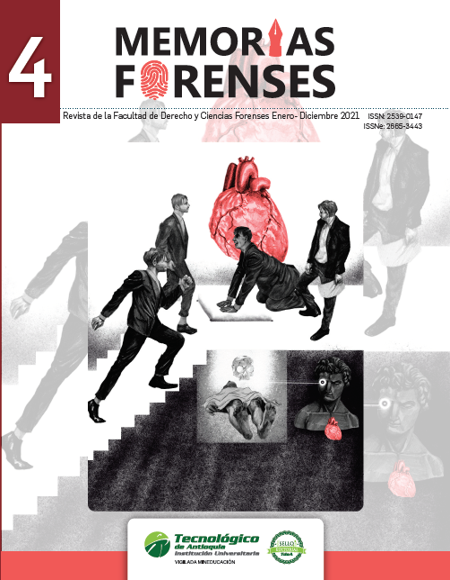A rapid ecological assessment for necrophagous flies (Diptera, Calyptratae) in a mosaic landscape of the Colombian Andes
Evaluación ecológica rápida de moscas necrófagas (Diptera, Calyptratae) en un mosaico paisajístico de los Andes Colombianos
Contenido principal del artículo
Resumen
A necrophagous flies ensemble (Diptera, Calyptratae) was rapidly assessed in four coverages of an anthropogenic landscape in the east range of the Colombian Andes. Ninety-seven individuals belonging to eight species were collected in only two hours of sampling. The highest diversity values and the occurrence of asynanthropic flies in the forest under conservation management may reflect a positively natural restoration process in the area assessed. Grassland, rural and urban coverages were similarly low in diversity and composition. A brief discussion about the flies’ bionomy and their environment association is offered. Necrophagous flies ensembles by coverage behave as an indicator of the anthropic impact on the landscape.
Descargas
Detalles del artículo
Referencias (VER)
Amat, Eduardo. 2017. “Calliphoridae (Diptera) Do Noroeste Da América Do Sul: Diversidade, Distribuição e Código de Barras Genético.” Instituto Nacional de Pesquisas da Amazônia. https://bdtd.inpa.gov.br/handle/tede/2608.
Amat, Eduardo, María C Vélez, and Marta Wolff. 2008. “Clave Ilustrada Para La Identificación de Los Géneros y Las Especies de Califóridos (Diptera: Calliphoridae) de Colombia.” Caldasia 30(1): 231–44.
Baumgartner, D, and Bernard Greenberg. 1985. “Distribution and Medical Ecology of the Blow Flies (Diptera: Calliphoridae) of Peru.” Annals of the Entomological Society of America 78: 565–87.
Chao, Anne, and Lou Jost. 2015. “Estimating Diversity and Entropy Profiles via Discovery Rates of New Species.” Methods in Ecology and Evolution 6: 873–82.
D’almeida, J M, and Hugo de Souza Lopes. 1983. “Sinantropia de Dípteros Caliptratos (Calliphoridae) No Estado Do Rio de Janeiro.” Arquivos da Universidade Federal Rural do Rio de Janeiro 6: 39–48.
Gadelha, B Q. 2009. “A Importância Dos Mesembrinelíneos (Diptera: Calliphoridae) e Seu Potencial Como Indicadores de Preservação Ambiental.” Oecologia Brasiliensis 13(4): 660–64.
Gregor, F, and D Povolný. 1958. “Versuch Einer Klassifikation Der Synanthropen Fliegen (Diptera).” Journal Hygiene Epidemiology Microbiology & Inmunology 2: 205–16.
Grella, Maicon D. et al. 2015. “Phenotypic Polymorphism of Chrysomya albiceps (Wiedemann) (Diptera: Calliphoridae) May Lead to Species Misidentification.” Acta Tropica 141(Part A): 60–72.
Grisales, Diana, Magnolia Ruiz, and Silvio Villegas. 2010. “Insects Associated with Exposed Decomposition Bodies in the Colombian Andean Coffe Region.” Revista Brasileira de Entomologia 54(4): 637–44.
Majer, J D. 1987. “Invertebrates as Indicators for Management.” In Nature Conservation: The Role of Remnants of Native Vegetation, eds. D A Saunders, G W Arnold, A A Burbidge, and A J M Hopkings. New South Wales, Australia, 353–54.
Marshall, Stephen A. 2012. Flies: The Natural History and Diversity of Diptera. Richmond Hill, Ontario: Firefly Books Ltd.
Nuorteva, Pekka. 1963. “Synanthropy of Blowflies (Dipt., Calliphoridae) in Finland.” Annales Entomologici Fennici. 29: 1–49.
Povolný, D. 1971. “Synanthropy.” In Flies and Disease, Ecology, Classification, and Biotic Associations, Vol. 1, ed. Bernard Greenberg. Princeton, New Jersey, 17–54.
Rosa, G.S., L.R. De Carvalho, S.F. Dos Reis, and W.A.C. Godoy. 2006. “The Dynamics of Intraguild Predation in Chrysomya Albiceps Wied. (Diptera: Calliphoridae): Interactions between Instars and Species under Different Abundances of Food.” Neotropical Entomology 35(6): 775–80. http://www.scielo.br/scielo.php?script=sci_arttext&pid=S1519-566X2006000600009&lng=en&nrm=iso&tlng=en (December 29, 2018).
de Sousa, José Roberto Pereira, Maria Cristina Esposito, Fernando da Silva Carvalho, and Leandro Juen. 2014. “The Potential Uses of Sarcosaprophagous Flesh Flies and Blowflies for the Evaluation of the Regeneration and Conservation of Forest Clearings: A Case Study in the Amazon Forest.” Journal of insect science (Online) 14(215): 1–5.
de Sousa, José Roberto Pereira, Fernando da Silva Carvalho-Filho, Leandro Juen, and Maria Cristina Esposito. 2020. “The Effects of Cattle Ranching on the Communities of Necrophagous Flies (Diptera: Calliphoridae, Mesembrinellidae and Sarcophagidae) in Northeastern Brazil.” Journal of Insect Conservation 24(4): 705–17. https://doi.org/10.1007/s10841-020-00246-y.
Uribe-M, Natalia, Marta Wolff, and Claudio J. B. de Carvalho. 2010. “Synanthropy and Ecological Aspects of Muscidae (Diptera) in a Tropical Dry Forest Ecosystem in Colombia.” Revista Brasileira de Entomologia 54(3): 462–70. http://www.scielo.br/scielo.php?script=sci_arttext&pid=S0085-56262010000300018&lng=en&nrm=iso&tlng=en (December 28, 2018).
Whitworth, Terry. 2014. “A Revision of the Neotropical Species of Lucilia Robineau-Desvoidy (Diptera: Calliphoridae).” Zootaxa 3810(1): 76. http://biotaxa.org/Zootaxa/article/view/zootaxa.3810.1.1.
Whitworth, Terry L., and Sohath Yusseff-Vanegas. 2019. 4659 Zootaxa A Revision of the Genera and Species of the Neotropical Family Mesembrinellidae (Diptera: Oestroidea).










